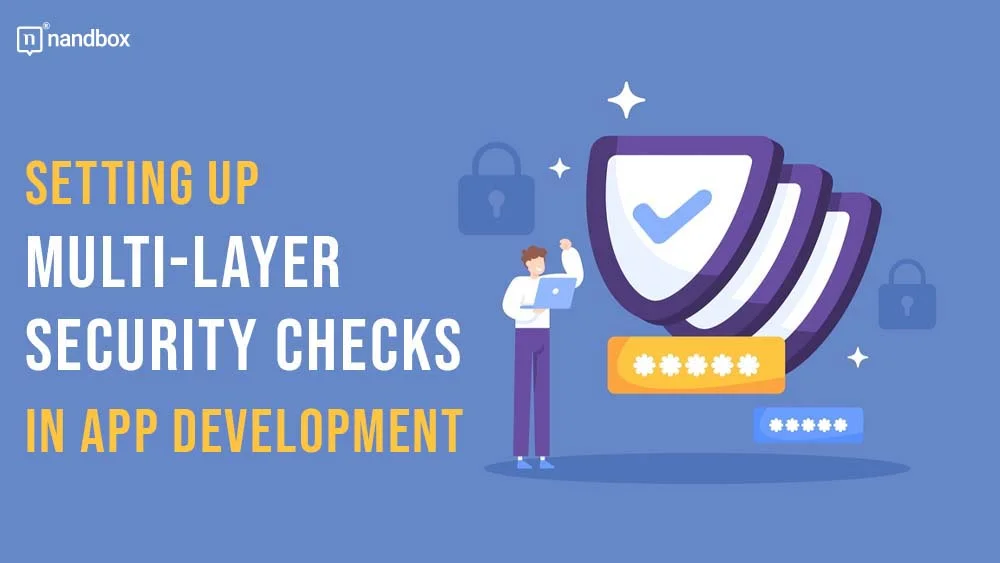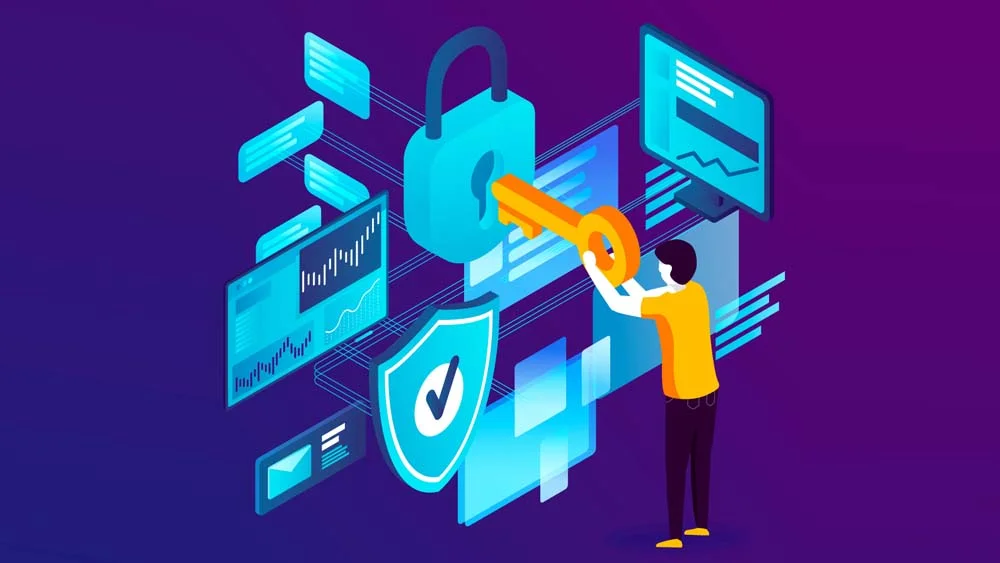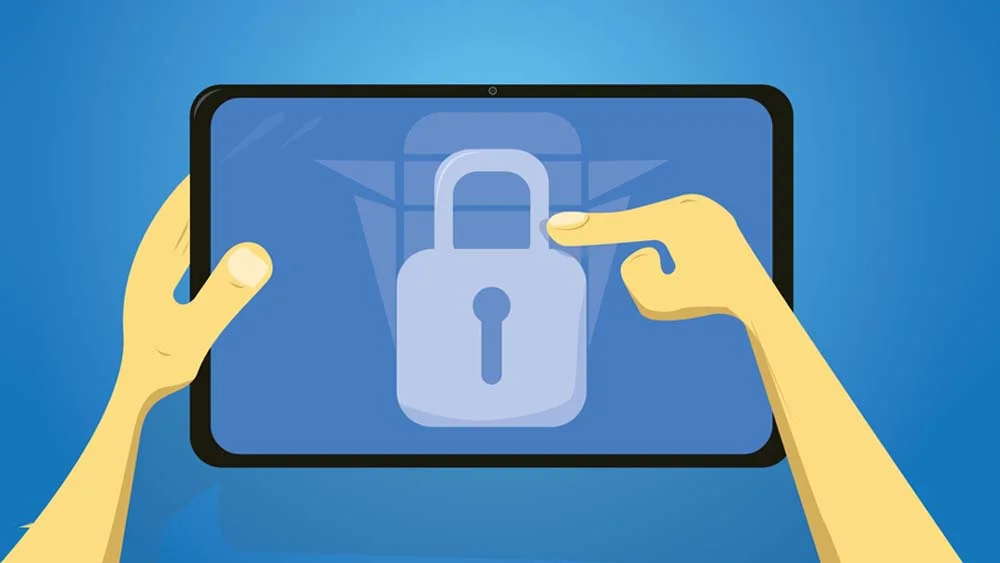Data security is more crucial now than ever. App developers bear the essential responsibility of ensuring applications are safe and secure for users. With the increasing sophistication of cyber threats, relying on a single layer of security is no longer enough. And that’s where multi-layer security checks come in.
Setting up multi-layer security checks in mobile app development is like building a fortress of your code. Each layer acts as a barrier, protecting against different types of attacks and vulnerabilities. This comprehensive approach ensures that even if bad actors breach one layer, the others stand firm to keep your app and its users safe.
That said, here are a few tips on setting up multi-layer security checks in app development:
Secure Coding Practices
When developing software, it’s crucial to build security from the start. Embrace coding practices focused on safeguarding user data and preventing breaches right from the foundations.
First, validate all input, whether from forms, Application Programming Interfaces (APIs), or databases, to block malicious content. Properly encode outputs to sidestep code injection exploits. Implement robust authentication mechanisms, such as Multi-Factor Authentication (MFA) for sensitive areas and strong access controls.
Error handling done right is also essential. Handle errors gracefully without exposing sensitive details that could aid attackers. For instance, instead of stating invalid credentials, a vague login failed is safer. Additionally, regular security training empowers developers to meet evolving cyber threats head-on with the latest defensive strategies and mindsets.
Consider working with third-party managed networks that specialize in secure infrastructure and services. Their expertise can complement your security efforts, providing an additional layer of protection through services like web application firewalls, perimeter security, and round-the-clock monitoring. Partnering with the right providers allows you to concentrate on your core application while leveraging robust security solutions.
Secure Data Storage
Protecting sensitive information is vital, whether it’s traveling or at rest. Encrypt any sensitive data hitting the road with security protocols like Transport Layer Security (TLS). And when data is in storage, encrypt it using the tough, secure Advanced Encryption Standard (AES).
For cookies that carry tasty session data, make sure they have the “HTTP Only” (Hypertext Transfer Protocol) and “Secure” flags checked; this prevents sneaky access. And for databases, housing all your precious data, lock them down tight. Use complex passwords, limit access to only those who need it, and scan regularly for any security holes.
The idea is to create multi-layered cybersecurity around your data, whether it’s zipping through cyberspace or cozied up on your servers. With proper data encryption, secure protocols, and restricted database access, your sensitive assets stay safe and protected at all times.
Prioritize Network Security
Safeguarding your network security is just as crucial as locking down the data itself. Firewalls act as strict bouncers, carefully inspecting each packer trying to enter or exit based on pre-set security rules. They block any shady traffic while allowing the legit stuff through.
Intrusion Detection Systems (IDS) constantly monitor network activity, like watchful security cameras accounting for any suspicious or behavioral patterns that could signal an attack brewing. At the first hint of foul play, they sound the alarms.
For remote team members or parties that need to visit your premises digitally, Virtual Private Networks (VPNs) create encrypted tunnels—secure locked doors only they can access. VPNs prevent outsiders from eavesdropping on sensitive communications over public networks.
With firewalls managing access permissions, IDS providing 24/7 surveillance, and VPNs enabling safe remote connectivity, your network perimeter is fortified against external threats. These robust security measures ensure all digital pathways remain locked down and protected.
Ensure Authentication And Authorization
Keeping unauthorized people out of your app is critical for security. Implement strong authentication measures that ensure only legitimate users can access permitted areas. Require complex passwords incorporating letters, numbers, and special characters; this makes them harder to guess. Take it a step further with MFA. This adds an extra verification step, like entering a code sent to your phone after the password.
Authorization rules based on user roles provide an additional safeguard. With Role-Based Access Control (RDAC), you can grant different levels of access. A manager may have full permission, while regular team members only see what’s necessary for their jobs. It’s like a principal having full access to school records, while teachers can only view their current students’ information.
Combining robust password policies, MFA requirements, and tailored access permissions makes it challenging for unauthorized individuals to breach your applications. These security controls transform it from an open door that anyone can walk through into a highly secured environment where only verified persons with the proper credentials can enter approved sections.
Consider Application Security Testing
Regularly scrutinize your applications for vulnerabilities. Static analysis digs through the source code itself, catching coding flaws and potential security holes before releasing the app.
Application security testing evaluates the application while it’s live and running, mimicking real-world attacks to expose weaknesses hackers could exploit. Think of it as stress-testing a bridge by driving heavy trucks over it.
Penetration tests go even further by attempting to infiltrate your defenses from an attacker’s perspective. Here, ethical hackers actively try to breach your systems, identifying cracks so you can fortify them.
This trio of static, dynamic, and penetration testing techniques continuously validates your application security posture. Regular testing catches vulnerabilities early before they turn into gaping holes that cybercriminals can abuse. Proactive testing prevents costlier reactive firefighting down the line.
Secure Application Programming Interface
APIs act as digital bridges, connecting your applications to other systems and services. However, these bridges can become prime targets for cyber attackers looking to cause disruption. That’s why securing your APIs is necessary.
An excellent first step is to implement API gateways. Think of them as secure checkpoints governing all API traffic flow. They carefully inspect each request, only allowing authorized and formatted data to pass through.
Rate limiting is also critical, capping the number of requests that can hit your APIs within a given period. This prevents malicious parties from overwhelming your systems with excessive traffic, a tactic known as a denial-of-service attack.
This multi-layered security approach of gateways and rate limiting is crucial for protecting your systems and data from external threats. Safeguarding these digital gateways stops attacks before they can infiltrate further into your infrastructure.
Conduct Security Audits And Ensure Compliance
Staying ahead of security threats requires regular reviewing and updating of your layered defense mechanism. Conduct routine in-depth audits to identify any vulnerabilities or gaps in your systems before attackers can exploit them.
Ensure your application also complies with all relevant data protection regulations and industry standards, such as the General Data Protection Regulation (GDPR) for user privacy and the Payment Card Industry Data Security Standard (PCI DSS) for payment processing security. Failure to comply can result in hefty fines and reputational damage.
It’s also wise to engage security experts for impartial audits and penetration testing. Their fresh outside perspective can spot weaknesses your in-house team may have overlooked. This multi-layered security strategy keeps your security posture evaluated and updated against evolving threats.
Create A Robust Incident Response Plan
Having an incident response plan in place ensures that you can respond to security breaches immediately. Start by implementing monitoring systems to detect and alert you to any suspicious activities or potential violations. These act as cyber smoke alarms.
Assemble a dedicated incident response team with clear roles and responsibilities. Develop comprehensive procedures for different incident scenarios. Detail the precise steps to contain the threat, minimize damage, and restore normal operations.
Also, maintain security backups of critical data and systems. If incidents disrupt operations, you can quickly restore from these clean backups rather than starting over. It’s like having a readily accessible emergency kit.
Conclusion
Setting up multi-layer security checks in app development is more than just a necessity: it’s a strategic imperative in today’s digital landscape. With cyber threats growing in complexity and frequency, developers must be proactive in safeguarding their applications. With multi-layer security checks, you can build a fortress around your application. But remember, security is an ongoing process, not a one-time fix. So, stay vigilant, keep your layered defense updated, and adapt to new threats as they emerge.





